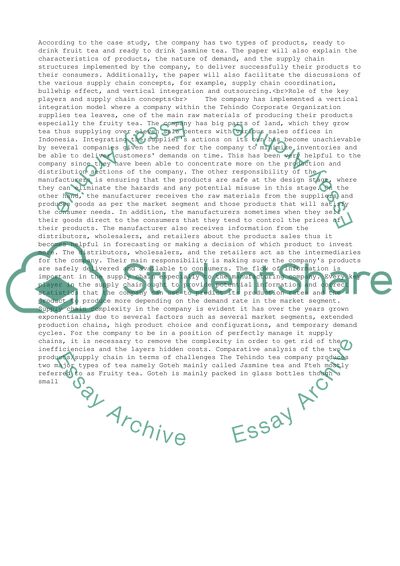Cite this document
(“Supply Chain Management. Tehindo Tea Manufacturing Company Case Study”, n.d.)
Retrieved from https://studentshare.org/management/1490962-supply-chain-management-tehindo-tea-manufacturing-company
Retrieved from https://studentshare.org/management/1490962-supply-chain-management-tehindo-tea-manufacturing-company
(Supply Chain Management. Tehindo Tea Manufacturing Company Case Study)
https://studentshare.org/management/1490962-supply-chain-management-tehindo-tea-manufacturing-company.
https://studentshare.org/management/1490962-supply-chain-management-tehindo-tea-manufacturing-company.
“Supply Chain Management. Tehindo Tea Manufacturing Company Case Study”, n.d. https://studentshare.org/management/1490962-supply-chain-management-tehindo-tea-manufacturing-company.


